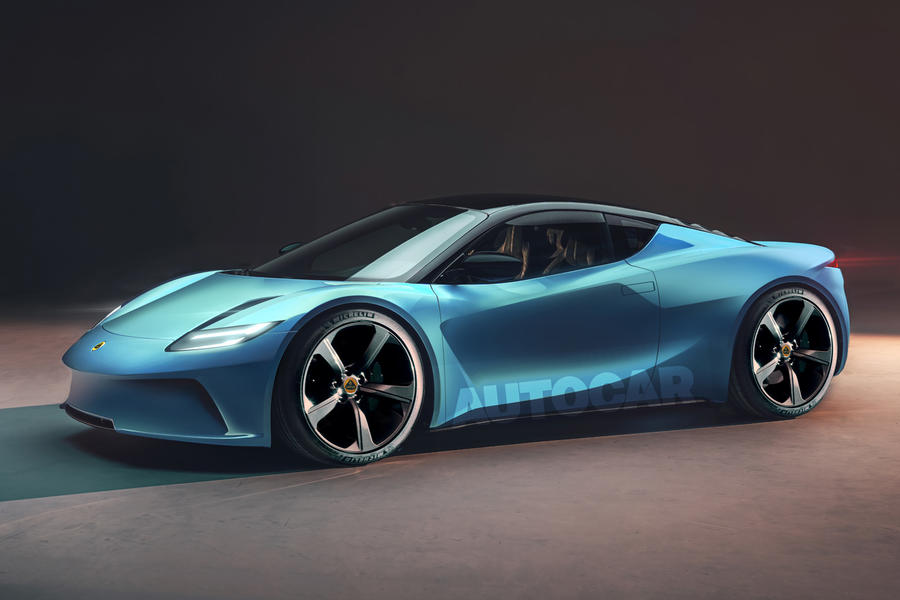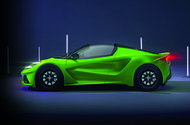Electric successor to the Lotus Elise will take influence from 2000bhp Evija hypercar
Lightweight battery-powered two-seater will kick-start an electric era of Hethel-developed sports cars
Lotus is continuing with development of an electric successor to the legendary Elise, Autocar can reveal, having ended its collaboration on the project with Alpine.
In early 2021, the two firms announced plans to share development of an electric sports car platform to underpin successors to the Lotus Elise and Alpine A110, but they recently ended the deal by mutual agreement – raising questions over the viability of their respective sports EV projects.
Alpine earlier this week confirmed that it would develop a new platform in-house for the electric A110 following the split – and could use the architecture for several other models.
“We had a long discussion and finally decided to build our own platform,” Renault Group CEO Luca de Meo told Autocar.
Lotus hasn’t officially confirmed the status of its own project, codenamed Type 135, but Autocar understands that work remains ongoing to prepare the car for a 2026 launch.

It will cap the first phase of Lotus’s EV reinvention and will represent the “pure essence” of the brand, being built around the dedicated Project LEVA (Lightweight Electric Vehicle Architecture) structure that was set to also underpin the new Alpine.
The Type 135 will be designed and engineered in Hethel, Norfolk, ensuring that it can build on the lineage of the fabled sports cars that have been produced there, such as the Lotus Elise.
The new E-Sports platform, which incorportates LEVA, will give it a mid-engined-style layout, most likely with the battery pack stacked in the middle of the car, rather than under the floor, as is usual for EVs. That will allow the Porsche 718 Boxster rival to sit lower and ensure weight distribution is more in keeping with its remit.
While the Type 135 will be a small contributor to Lotus’s sales volume, it will be a vital model for the brand, commercial chief Mike Johnstone told Autocar recently.
“It’s a car that needs to be at the bullseye of the brand, which signifies exactly what Lotus stands for in an electric age,” he said.
“That’s in no way to diminish the Eletre, [Type] 133 and [Type] 134,” he continued, referring to the firm’s new electric SUV and upcoming saloon and crossover. “They are very much Lotus models, but the most pure essence of Lotus will be the Type 135.”
The E-Sports platform has yet to be revealed in its entirety but is said to be 37% lighter than the equivalent structure used by the combustion-engined Emira sports car.
It has been designed from the ground up to compensate for the added weight of an electric powertrain and with a view to replicating the typical dynamic traits of previous Lotus models.
The batteries can either be stacked vertically behind the seats, in a layout reminiscent of a conventional mid-engined format, or arranged under the floor in longer-wheelbase cars with rear seats.
The LEVA unit will be mated to a bulkhead and front end completely unrelated to those used by the Emira, but managing director Matt Windle is keen for Lotus’s trademark dynamic agility to be carried over to the new models.
“It’s our DNA: dynamics, aerodynamics, lightweighting – that’s what we do on all our products,” Windle told Autocar at the LEVA’s unveiling. “We still want these to be Lotus products. They are going to have a different propulsion system but that system comes with benefits as well: instant torque, easier cooling and better packaging, so the first sports car [the Type 135] will have a lot of storage and packaging benefits as well.”
The E-Sports architecture will host single- and twin-motor powertrains ranging in output from 469bhp to 872bhp. This means the entry-level sports car will pack nearly double the power of even the most powerful iteration of the Elise, and more powerful versions could fill the gap left by the more track-focused Exige.
The E-Sports platform will accommodate rear- and four-wheel-drive powertrains from the off, although the conceptual applications previewed so far by Lotus all use a rear-mounted drive system. Windle told Autocar that Lotus does not “want to close off the possibility” of offering a similar torque- vectoring set-up to that found in the top-rung Evija, which will continue to serve as the brand’s halo model in the coming years in both a marketing and engineering sense. As a result, some of the Evija’s defining features will make their way into more mainstream Lotus sports cars.
One early hint is that the EV will be made as aero-efficient as possible with aerodynamic aids “running through the car”, in the vein of the Evija’s prominent Venturi tunnels, thereby taking advantage of the more compact nature of an EV drivetrain. However, the Type 135 will be far more accessible than the hypercar. Windle emphasised Lotus’s commitment to affordable performance and said “efficiencies” throughout the Geely group, which also includes Volvo, Polestar, Lynk&Co and LEVC, will allow Hethel to use components and systems from other brands to keep development and retail costs down.
He said Lotus will struggle to offer the Type 135 at a similar price point to the entry-level Elise but forecasted that a “significant price drop” in the cost of necessary materials and components could enable it to be priced at the upper end of the now-retired Exige line-up, which suggests a price of between £80,000 and £100,000.
However, the overarching priority for the Type 135 is to stay true to the company’s long-held reputation for lightweight, accessible performance. Windle said the stacked battery arrangement used for the Type 135 gives “the yaw control and stability that we’re used to setting cars up around” while enabling a “sports car feel”. Notably, Lotus used this arrangement for the first-generation Tesla Roadster, which had a wheelbase only 50mm longer than that of the Elise, on which it was loosely based.
This set-up also allows the driver to sit as close to the ground as possible, like in a petrol-engined Lotus sports car, whereas the underfloor batteries used in larger E-Sports-based cars will raise the seat height – and vehicle profile – by some 100mm.
But Lotus sports cars won’t sacrifice day-to-day usability in their pursuit of dynamic superiority. The smallest battery fitted to this platform will be a 66.4kWh unit, which could feasibly offer a range of around 300 miles in a lightweight, low-slung two-seater. The larger, 99.6kWh battery – also available in ‘slab’ or ‘chest’ format – could bump up the range to nearer 450 miles.
The architecture will also be equipped with 800V charging hardware to make it compatible with the fastest chargers on the market.
Windle was tight-lipped on the specifics of the other cars that will use the E-Sports architecture but emphasised that Lotus UK “should not be a single-model producer” and will build a line-up of distinct sporting models “in multiple segments in the market range”.
Not every retired model will necessarily be replaced, but the capacity for the platform to accommodate a rear-driven four-seater with a wheelbase of 2650mm paves the way for an electric successor to the Evora, too.
The Type 135 remains the main priority at Hethel currently, so no details have emerged about any potential larger sports cars, but a post- 2026 launch date for such a model – following the Type 135’s arrival – could enable it to serve as the EV replacement for the Emira, and thus provide a dual focus on dynamism and refinement. As the Emira is available with a choice of V6 and turbo four-pot power, any electric successor would be likely to offer a range of power outputs, and potentially rear- and four-wheel drive.
As for the confirmed maximum output of the E-Sports architecture, Windle said “there is always scope” for a Lotus model with 872bhp – more than a Lamborghini Sián – but he would not be drawn on what that could look like.
Source: Autocar
